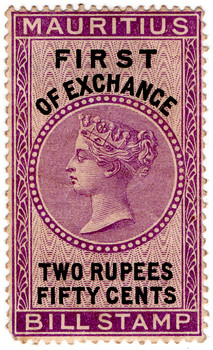


Mauritius issued revenue stamps from 1 March 1869 to 1904. There were various types of fiscal stamps for different uses.



Mauritius issued revenue stamps from 1 March 1869 to 1904. There were various types of fiscal stamps for different uses.
The first bill stamps of Mauritius were issued on 28 March 1869. They were locally lithographed and imperforate, with values ranging from 1d to 16s8d in various colours. They were printed in triplets inscribed First, Second or Third of Exchange for use on triplicate documents. Later that year a new set portraying Queen Victoria was issued, also in triplets. Stamps in this design, with various changes in colour and currency, continued to be used until 1903. In 1904 a new type appeared, similar to the design used for high value postage stamps, but with a blank value tablet and in green. These were then overprinted BILLS ONLY FIRST (or SECOND or THIRD) OF EXCHANGE and the value. Two slightly different formats exist. [1]
Between and 1896 and 1898 some of these were overprinted for use in the Seychelles. There were also some provisional overprints printed there, and some of these are very rare and some possibly unique. [2]
In 1889, two 4c postage stamps, in the normal and in special colours, were overprinted INLAND REVENUE. A year later a single 4c stamp was issued in lilac, and in 1898 this was reprinted in green. All four stamps of this type of revenue are common and are easy to obtain. [2]
The first insurance stamps of Mauritius were issued on 1 March 1869. They were Queen Victoria postage stamps handstamped INCE in black. From later that year to 1879, all insurance stamps were internal revenue stamps handstamped or overprinted INCE, sometimes the stamps were also surcharged. In 1879 a new set of internal revenue stamps but in new colours was overprinted INSURANCE in black. In 1904 a new type appeared, similar to the design used for high value postage stamps, but with a blank value tablet and in purple. These were then overprinted INSURANCE ONLY and the value. Three different formats exist. [1]
The first internal revenue stamps of Mauritius were issued on 1 October 1869. The first issue consisted of twelve values ranging from 1d to £1, each stamp portraying Queen Victoria. Stamps in this design continued to be issued until c.1900, with various changes in watermark, currency and colour. Between 1885 and 1894 there were a number of provisional surcharges. [1]
Some internal revenue stamps, sometimes in special colours, were overprinted for use as Insurance stamps between 1869 and 1879. Between c.1892 and 1895 some were also overprinted for use in the Seychelles.
Mauritius also had imprinted stamps in the 1820s, colourless embossed stamps from the 1860s to 1910, and embossed stamps in vermilion from 1963 to 1971. [1]

Revenue stamps of Malta were first issued in 1899, when the islands were a British colony. From that year to 1912, all revenue issues were postage stamps overprinted accordingly, that was either done locally or by De La Rue in London. Postage stamps also became valid for fiscal use in 1913, so no new revenues were issued until 1926–30, when a series of key type stamps depicting King George V were issued. These exist unappropriated for use as general-duty revenues, or with additional inscriptions indicating a specific use; Applications, Contracts, Registers or Stocks & Shares. The only other revenues after this series were £1 stamps depicting George VI and Elizabeth II. Postage stamps remained valid for fiscal use until at least the 1980s.

Revenue stamps of the United Kingdom refer to the various revenue or fiscal stamps, whether adhesive, directly embossed or otherwise, which were issued by and used in the Kingdom of England, the Kingdom of Great Britain, the United Kingdom of Great Britain and Ireland and the United Kingdom of Great Britain and Northern Ireland, from the late 17th century to the present day.
The Australian state of Western Australia issued revenue stamps from 1881 to 1973. There were various types for different taxes.
The Australian State of Tasmania issued adhesive revenue stamps from 1863 to 1998, although impressed stamps had appeared briefly in the 1820s. There were general revenue and stamp duty issues, as well as a number of specific issues for various taxes.

Revenue stamps of Ireland refer to the various revenue or fiscal stamps, whether adhesive, directly embossed or otherwise, which have been used on the island of Ireland since 1774. These include issues by the Kingdom of Ireland, issues by the United Kingdom specifically for use in Ireland or briefly Southern Ireland, and issues of an independent southern Ireland since 1922. Revenue stamps of Northern Ireland were also issued from 1921 to the 1980s, but they are not covered in this article.

Zanzibar issued revenue stamps from when it was a British protectorate in 1892, to after when it became part of Tanzania in 1993.

The island of Cyprus first issued revenue stamps in 1878 and continues to do so to this day. The Turkish Republic of Northern Cyprus also issues its own revenue stamps.
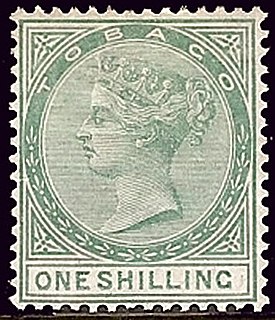
Trinidad and Tobago, formerly divided as two separate colonies, issued revenue stamps from 1879 to around 1991.
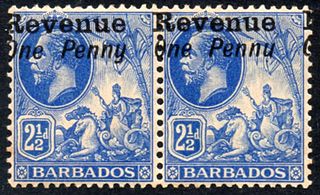
The island of Barbados first issued revenue stamps in 1916. There were various types of fiscal stamps for different taxes.
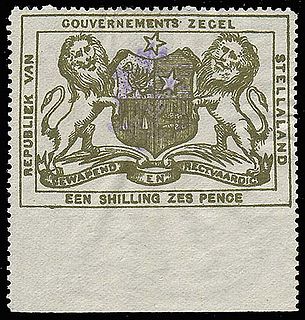
Bechuanaland first issued revenue stamps as Stellaland in 1884. Note: this information is wrong. Bechuanaland was split into British Bechuanaland and the Bechuanaland Protectorate. British Bechuanaland was added to the Cape Colony and the Bechuanaland Protectorate was governed from Mafeking until the seat of government was moved to Gaberone.

The South African Republic (ZAR), later known as Transvaal issued revenue stamps from 1875 to around 1950. There were a number of different stamps for several taxes.
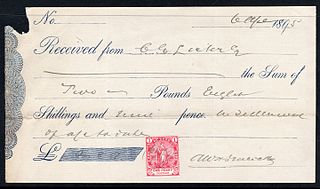
Cape of Good Hope issued revenue stamps from 1864 to 1961. There were a number of different stamps for several taxes.

Kenya, formerly known as British East Africa issued revenue stamps since 1891. There were numerous types of revenue stamps for a variety of taxes and fees. Also valid for fiscal use in Kenya were postage stamps issued by the following entities:

Revenue stamps of Jamaica were first issued in 1855. There were various types of fiscal stamps for different taxes.

Hong Kong issued revenue stamps from 1867 to the 1990s, both when it was a British colony as well as when it was under Japanese occupation.

Malaysia first issued revenue stamps as the Straits Settlements in 1863, and continues to do so to this day. Over the years, a number of entities in modern Malaysia have issued revenue stamps.
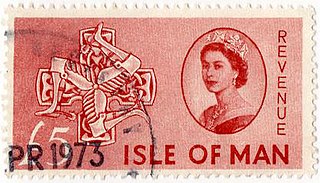
Revenue stamps of the Isle of Man refer to the adhesive revenue or fiscal stamps which were issued by the British Crown dependency of the Isle of Man between 1889 and 1976. British key type revenue stamps with an appropriate inscription were issued on the island until 1966, when revenue stamps showing various scenes and symbols of the island began to be issued. The last set of stamps was issued in 1976. From around 1920 to the 1970s, hundreds of contribution stamps were issued for National Insurance and related schemes.
Revenue stamps of Seychelles were first issued in 1893, when the islands were a dependency of the British Crown Colony of Mauritius. The first stamps were Mauritius Internal Revenue stamps depicting Queen Victoria overprinted for use in Seychelles, and Bill stamps were also similarly overprinted. Postage stamps depicting Victoria or Edward VII were overprinted for fiscal use at various points between 1894 and 1904, while surcharges on Bill stamps were made in around 1897–98.

Revenue stamps of Hawaii were first issued in late 1876 by the Kingdom of Hawaii to pay taxes according to the Stamp Duty Act of 1876, although embossed revenue stamps had been introduced decades earlier in around 1845. The stamps issued in 1876–79 were used for over three decades, remaining in use during the Provisional Government, the Republic and after Hawaii became a U.S. Territory. Some changes were made along the years: from rouletted to perforated, and some new values, colours, designs and overprints were added. Some postage stamps were briefly valid for fiscal use in 1886–88 to pay for a tax on opium imports, and a stamp in a new design was issued for customs duties in 1897. A liquor stamp was issued in 1905.
British Somaliland, a British protectorate in present-day Somaliland, issued adhesive revenue or fiscal stamps between 1900 and 1904. All Somaliland fiscals were revenue stamps of India overprinted BRITISH SOMALILAND.
| Wikimedia Commons has media related to Revenue stamps of Mauritius . |